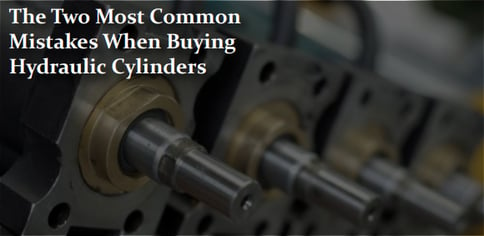
There are two main mistakes that machine manufacturers fall into when sourcing hydraulic cylinders. Either the wrong size is ordered, or the wrong mountings. Both mistakes have serious implications for businesses and there are common reasons why they happen. Understanding the reasons for these mistakes makes them easier to avoid, especially with the assistance of a hydraulics specialist such as Ranger Caradoc.
This section explains the two errors, their implications and how to avoid them.
1) Wrong size
As we saw in the previous section, the force a hydraulic cylinder can exert depends on its surface area and internal pressure.
To determine the correct size, you therefore have to work backwards from your requirements in terms of:
- Speed
- Force/strength, and
- Capability
It is a common mistake to misjudge these requirements and therefore choose the wrong size. The result is a cylinder that operates at the incorrect speed, or that lacks the capacity to carry out its function.
2) Wrong mountings
It is important that a hydraulic cylinder is mounted correctly with the right components. Failure to do this can result in incorrect functions and problems with your warranty
Approaching your machine as an integrated hydraulic system will help to avoid this problem. Issues most frequently arise when components are ordered on a part by part basis.
To function correctly, a hydraulic cylinder must have the appropriate:
- Fixed or swivel clevis ends
- Micro or pivoting feet
- Flanged, foot or trunnion mountings
- Displacement
Implications:
Implications of making these mistakes range from product failure at one end of the spectrum, to poor performance and excessive running costs at the other. Warranty issues are also bound to come up when parts need replacing.
The solution to these mistakes:
The solution to this is to work with a supplier that speaks your language and works with you to address your hydraulics requirements, which include ordering the correct parts. The business relationship starts not with the parts order, but with a solution-focused dialogue that results in a custom purchase to meet the customer’s specific needs.






